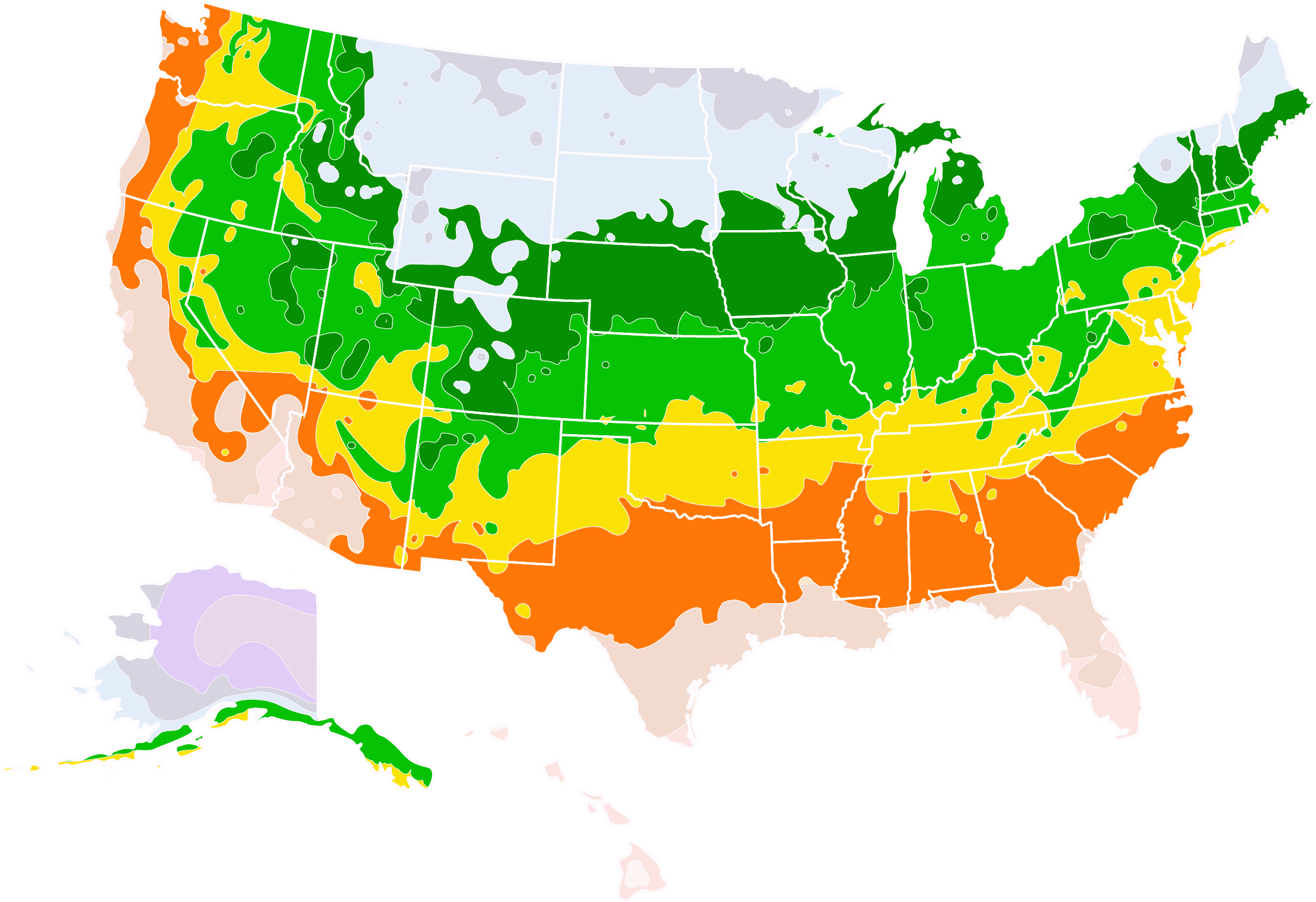- Home >
- Maple Trees >
- Viridis Weeping Japanese Maple
Viridis Weeping Japanese Maple for Sale - Buying & Growing Guide
Few trees can match the Viridis weeping Japanese maple, Acer palmatum dissectum 'Viridis,' for sheer beauty and elegance. This petite tree offers four seasons of interest. It is especially lovely in fall, when the leaves change to yellow, then to orange, and finally, to a rich darker red. In the winter, too, they provide drama and texture to snowy landscapes with twisted branches that make them a standout in the garden during the cold months. In spring and summer, the lovely light green deeply lobed leaves form a low but full canopy over the ground. What makes this tree extra special is its toughness and ability to thrive with minimal intervention. It needs little pruning and grows in any well-drained soil. If you're not convinced yet that you need a Viridis weeping Japanese maple, here are a few more plusses:
- The petite size makes it a great fit for smaller urban yards and landscapes.
- It is easily grown in containers.
- It grows throughout much of the continental U.S.
Enter your zip code to find nearby stores that may carry this plant.
Plant Care
Sunlight

This tree can handle partial shade to full sun; make sure it gets at least four hours of direct sunlight a day.
Watering
Give your Viridis weeping Japanese maple about an inch of water every seven to ten days — more in a drought.
Fertilizing

Fertilize your Viridis weeping Japanese maple with a light feeding of a balanced, slow-release fertilizer in the spring.
Planting and Care
Planting instructions
Site your tree where it will receive at least four hours of sun a day. You’ll actually get better color in the fall if it’s in partial shade. Although it is adaptable, the Viridis weeping Japanese maple tree prefers soil that is slightly acidic and drains well. Unpot your tree and tease out any encircling roots, which can girdle the tree and slowly kill it. Dig a hole that’s as deep as the root ball and twice as wide. Place the tree in the hole, spreading out the roots. Holding it upright and steady, fill in around the roots with topsoil that’s been mixed with well-rotted compost or manure. Tamp down as you go to eliminate air pockets. Water thoroughly. Apply a 2- to 3-inch layer of an organic mulch, such as bark chips, to retain moisture and hinder weed growth, but do not let the mulch touch the tree’s trunk, as this can encourage rot.
Watering and nutrients
For the first few weeks after planting, water your Viridis weeping Japanese maple tree every few days. Once you see vigorous new growth starting, taper back to once a week, giving it an inch of water at a time. If it is very hot or dry out, increase watering. Japanese maples don’t need much fertilizing if they are planted in rich and fertile soil. If you want to encourage growth, however, you can feed it in the spring with a slow-release, balanced formula designed for landscape trees and shrubs.
Pollination
In spring, these Japanese maples produce small, red flowers pollinated by insects. The resulting samaras — often called “helicopters” by children — appear in late summer.
Pruning
The only regular pruning you’ll need to do for your Viridis weeping Japanese maple is to remove any dead, diseased, or damaged branches whenever you see them. No other pruning is needed for the tree to produce its graceful, rounded canopy. If you do wish to prune for shape, do so when the tree is dormant in late winter.
Pests, diseases, and animals
Insects that may be attracted to your Japanese maple include aphids, scale insects, and root weevils. Horticultural oil may help fight them, or you may consider releasing predatory insects, such as ladybugs and lacewings, which eat aphids and other damaging insects. Potential disease problems include verticillium wilt, botrytis, and fusarium. All three of these are fungal in nature. You can hinder their growth by always watering at the base of the trunk rather than spraying the leaves and keeping the area around the trunk free of leaf debris.
Achieving maximum results
One option to consider with this beautiful little tree is placing it in an attractive container. It grows easily in a container and looks great in stone or terra cotta pots that are decorative in nature. Be sure that the pot you choose has good drainage holes in the bottom and is roughly twice the size of the root ball. You may need to refresh the soil every few years and move your tree to a slightly bigger pot. Keep in mind, also, that a container-grown plant often needs more water and more regular feeding than one grown in the ground.
FAQs
How is a Viridis weeping Japanese maple best used in a landscape?
Where can a Viridis weeping Japanese maple be grown?
Viridis weeping Japanese maple trees can be easily grown in USDA hardiness zones 5 through 8. That includes most of the middle section of the U.S. and ranges from the Pacific Northwest to coastal Maine. In colder climates, they may be grown in containers which are brought inside when the temperatures dip near -10 degrees Fahrenheit.
Is the Viridis weeping Japense maple prone to leaf scorch?
Not when it is sited in a spot that suits it and is well cared for. Leaf scorch is often the result of too much sun exposure or dry soil. If you are planting one near the southern end of its range, especially, it would be best to plant it where it will be shaded from the hot afternoon sun — and be sure to water it regularly.
You can't add more Product Name - Product size to the cart.
OK



